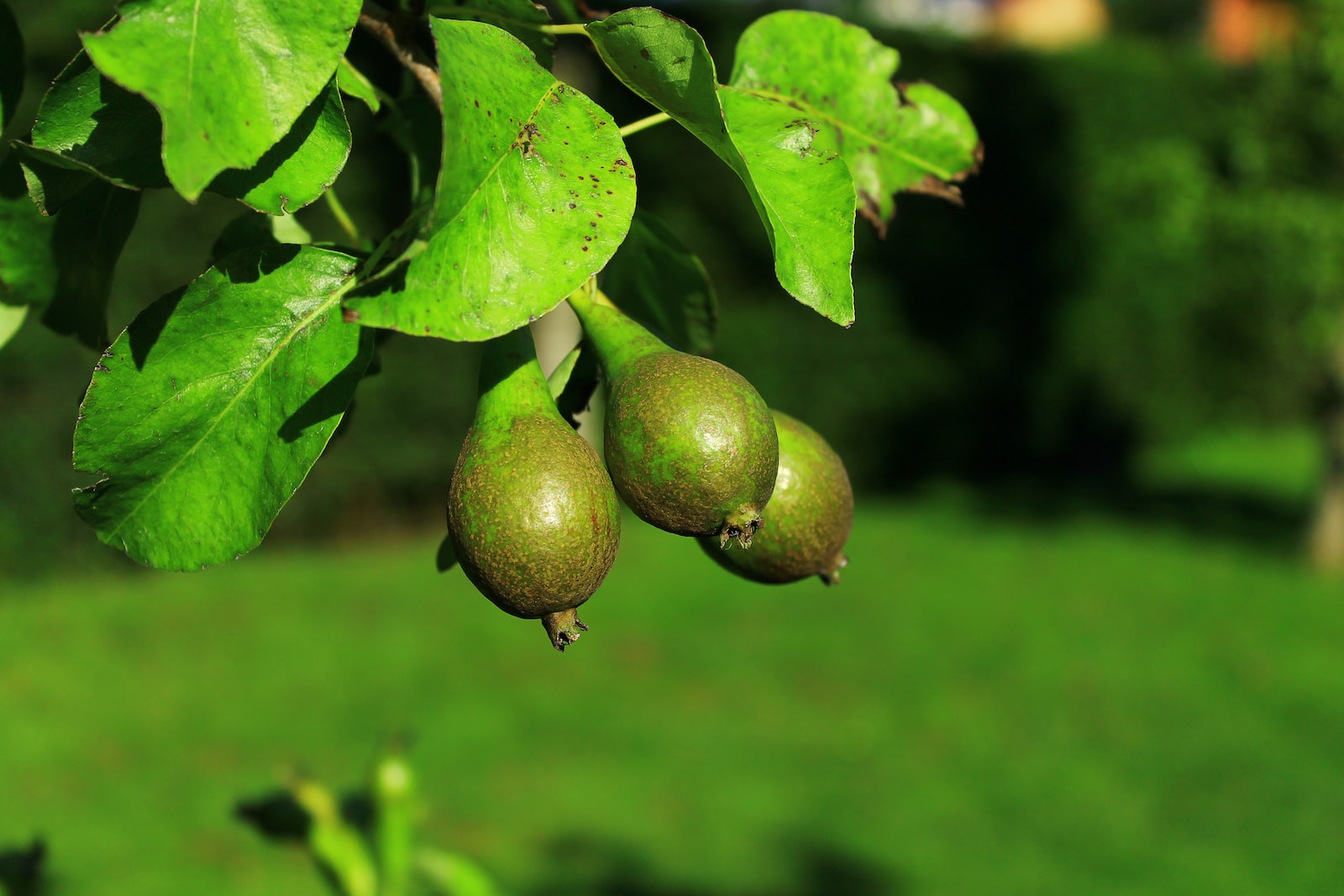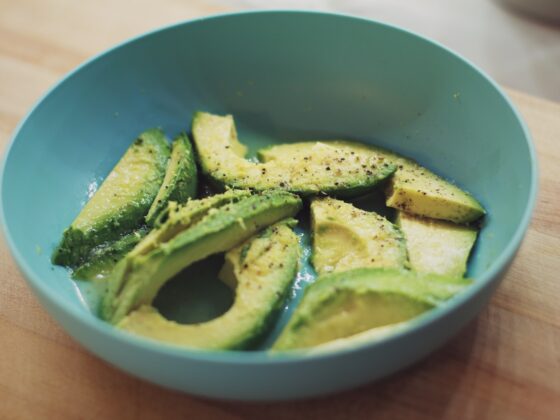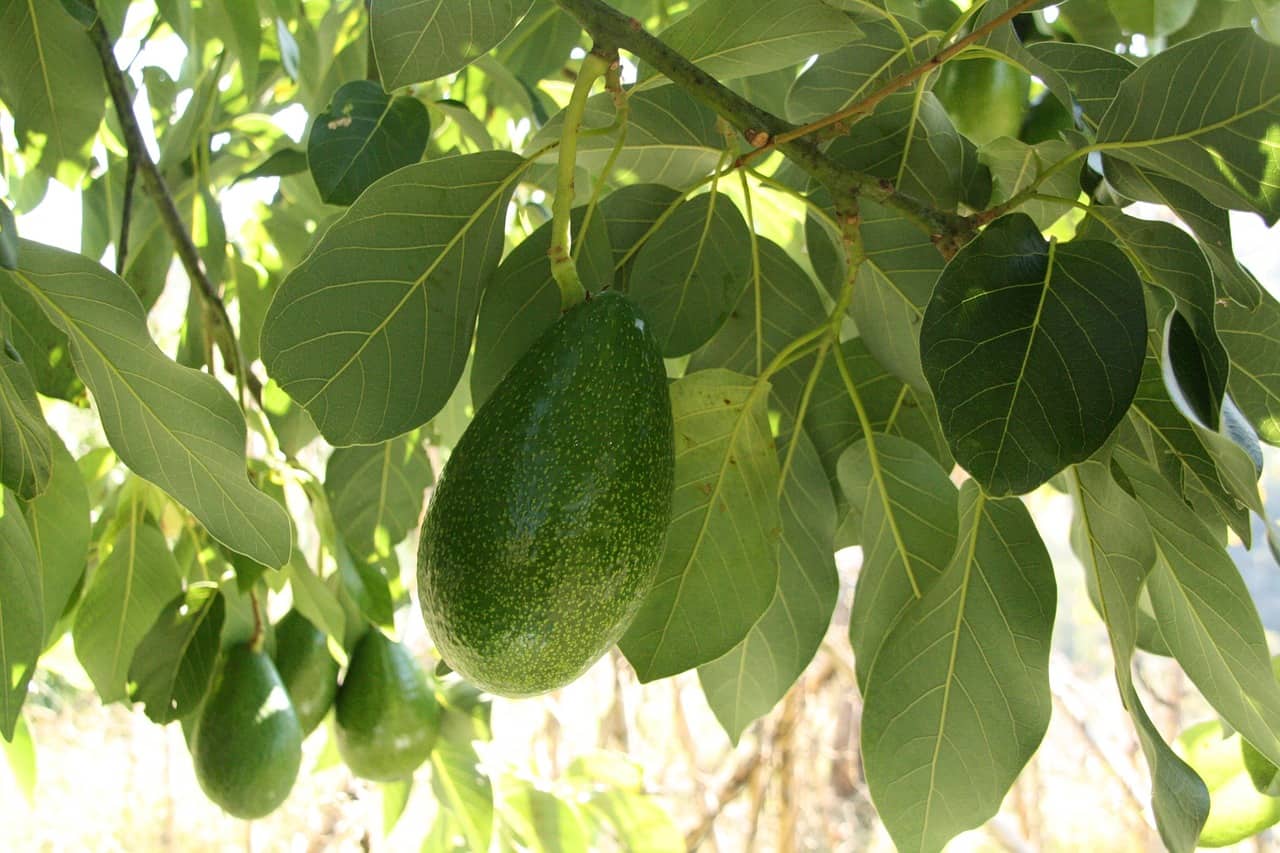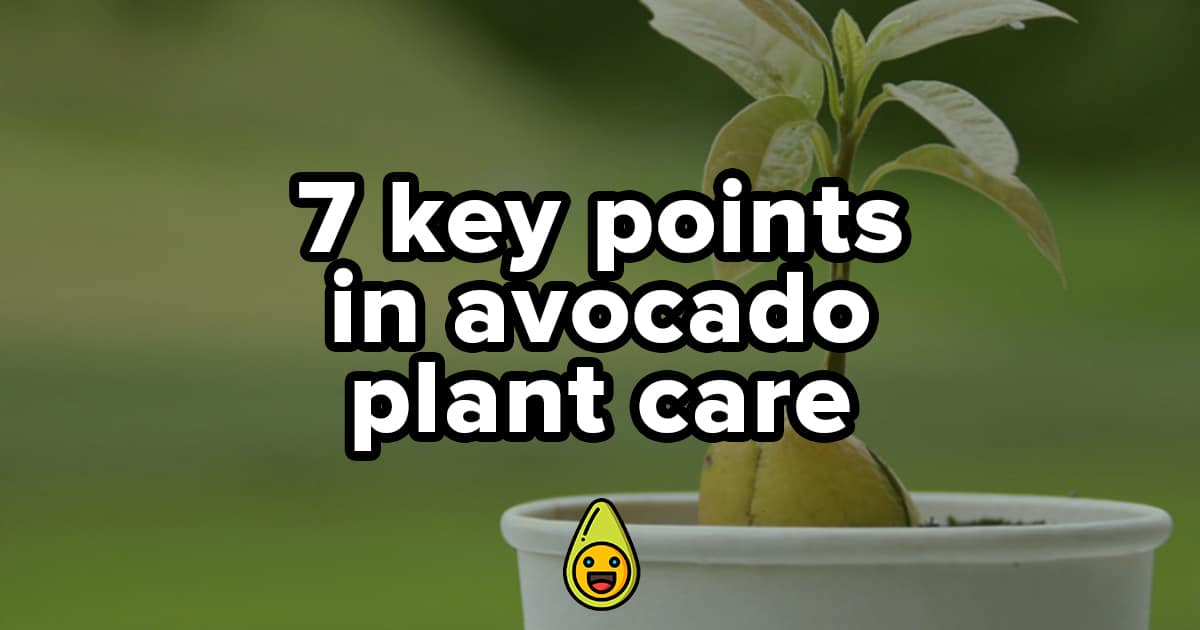Growing an avocado tree can be challenging if you’re unsure how to keep it healthy and productive. Did you know that the avocado is one of the most nutrient-rich fruits, beloved for its creamy texture and versatility? Our guide offers step-by-step instructions to tackle common issues like proper soil selection, watering habits, and sunlight exposure for your avocado tree.
Keep reading — your homegrown avocados await!
Table of Contents
The Best Conditions for Growing an Avocado Tree
Avocado trees thrive in well-draining soil, with a preference for slightly acidic to neutral pH levels. They require plenty of sunlight and should be protected from freezing temperatures.
Adequate watering, along with the occasional application of fertilizer, is essential for their overall health and growth.
Light requirements
Your avocado tree loves the sun. It needs at least 6 hours of direct sunlight every day to grow well. Make sure you plant your tree in a spot where it can soak up plenty of light. If you’re growing an indoor avocado plant, put it near a big window that gets lots of sun.
If the tree doesn’t get enough light, it won’t bear fruit as well. Young trees should be protected from too much hot sun until they are strong. Use shade cloth if needed to block some sun during the hottest part of the day.
Soil preferences
Avocado trees prefer well-draining soil with a slightly acidic to neutral pH level. Sandy loam or loamy soil works best, ensuring good water drainage and preventing waterlogged conditions that can harm the tree’s roots.
When planting an avocado tree, make sure the soil is rich in organic matter and nutrients to support healthy growth.
Adding compost or aged manure to the soil before planting provides essential nourishment for the avocado tree. It’s crucial to avoid compacted or heavy clay soils, as they retain too much water and can lead to root rot.
Watering frequency
Avocado trees need regular watering, especially during the first few years of growth. It’s crucial to keep the soil consistently moist but not waterlogged. During hot summer months, frequent watering is necessary to prevent the roots from drying out.
In cooler seasons, reduce the frequency of watering, allowing the soil to dry slightly between waterings.
Proper hydration is key for avocado tree care and growth. Understanding the right watering frequency will ensure healthy and thriving avocado trees.
Temperature and humidity needs
To ensure the healthy growth of avocado trees, it’s crucial to provide the right temperature and humidity. Avocado trees thrive in temperatures between 60°F and 85°F, with young trees being more sensitive to cold than mature ones.
When growing avocados indoors, it’s important to maintain a consistent temperature and avoid sudden fluctuations. Additionally, avocados prefer moderate to high humidity levels of around 60-70%.
Proper ventilation can help regulate moisture levels for optimal growth.
Fertilizer recommendations
When fertilizing avocado trees, use a balanced fertilizer with an N-P-K ratio of 2-1-1. Apply the fertilizer three times a year, in late winter, early summer, and late summer. Spread the fertilizer evenly under the tree’s canopy, avoiding direct contact with the trunk.
For younger avocado trees, reduce the amount of fertilizer to half of what is recommended for mature trees. Always water the tree thoroughly after applying the fertilizer to help it absorb the nutrients effectively.
Proper fertilization will promote healthy growth and bountiful fruit production in your avocado tree.

Planting an Avocado Tree
Whether you choose to plant your avocado tree in the ground or in a container, it’s important to follow proper planting techniques to ensure its healthy growth. Understanding the best practices for planting will set your avocado tree up for success from the start.
In-ground planting
When planting an avocado tree in-ground, consider the following tips:
- Choose a suitable location with well – draining soil and good sunlight exposure to ensure proper growth.
- Dig a hole that is twice as wide and deep as the root ball of the tree.
- Gently remove the tree from its container and place it in the center of the hole.
- Fill the hole with soil, ensuring that the top of the root ball sits just above ground level.
- Water the newly planted tree thoroughly to help settle the soil and eliminate any air pockets.
Container planting
To grow an avocado tree in a container, choose a pot that is at least 18 inches in diameter. A larger container allows the tree’s roots to spread and prevents them from becoming root-bound. Use a well-draining potting mix that contains peat, pine bark, and perlite. This type of soil provides good aeration and drainage for the avocado tree’s roots, which is essential for its growth.
Tips for Properly Caring for Avocado Trees
Proper watering techniques, using mulch to retain moisture, protecting the tree from frost, and regularly monitoring for pests and diseases are essential for maintaining healthy avocado trees.
Watering techniques
To properly care for your avocado tree, follow these watering techniques:
- Water your tree deeply once a week during dry periods, applying water at the root zone to encourage deep root growth.
- Use a soaker hose or drip irrigation system to deliver water slowly and directly to the roots, avoiding wetting the foliage.
- Adjust the watering frequency based on weather conditions; increase during hot, dry spells and decrease during cooler, wetter periods.
- Monitor soil moisture levels by checking 3 – 4 inches below the surface; water when the soil feels dry to the touch.
- Mulch around the base of the tree with organic materials such as wood chips or bark to retain soil moisture and reduce evaporation.
Mulching
Mulching around your avocado tree helps retain moisture, control weeds, and regulate soil temperatures. Use organic mulch like wood chips or straw. Apply a 3-inch layer with a 12-inch clearance from the tree trunk.
This encourages healthy root development and reduces water evaporation.
By mulching properly, you create an optimal environment for your avocado tree’s growth while minimizing maintenance needs. Keep in mind that using organic materials supports the soil ecosystem health, which is essential for overall plant well-being.
Protecting from frost
To protect your avocado tree from frost, cover it with a blanket or cloth on cold nights. Be sure to remove the covering during the day so the tree can get sunlight. Watering the soil before a frost can also help protect the roots and keep them insulated.
Additionally, consider using Christmas lights around your avocado tree to generate some warmth and shield it from freezing temperatures.
Now let’s delve into common problems with avocado trees and how to address them.
Pests and diseases
Avocado trees can be prone to pest infestations, such as spider mites and avocado lace bugs. Regularly inspect the leaves for any signs of pests like webbing or stippling. To deter these pests, consider using insecticidal soap or neem oil spray as organic control methods.
Additionally, diseases like root rot can affect avocado trees if the soil is excessively wet. Well-draining soil and proper watering practices can help prevent this issue.
Another common problem is the presence of fungal diseases like anthracnose and powdery mildew on avocado trees. To combat these diseases, prune any affected branches to improve air circulation within the tree canopy.
Common Problems with Avocado Trees
Issues like root rot, burnt leaves, mineral deficiencies, and pest infestations can affect the health of avocado trees. Learn how to identify and address these problems for a thriving avocado tree.
Root rot
Root rot is a common problem for avocado trees, caused by overwatering or poorly-draining soil. The keyword to avoid root rot is “well-draining soil.” Ensure that the planting site has good drainage and avoid watering excessively.
If you observe signs of root rot such as yellowing leaves or wilting, it’s important to act promptly by adjusting the watering schedule and improving drainage if necessary.
Moving on to another crucial aspect of avocado tree care, let’s discuss “Burnt leaves.”
Burnt leaves
Burnt leaves on avocado trees can occur due to sunburn or exposure to extreme heat. To prevent this, ensure your avocado tree is getting adequate shade during the hottest parts of the day, especially in regions with intense sunlight.
Mulching around the base of the tree can also help regulate soil temperature and moisture levels, reducing the risk of leaf scorching. Regular watering is crucial for maintaining leaf health and preventing dehydration-induced browning.
It’s essential to monitor your tree closely for any signs of burnt leaves and take quick action to address the issue before it affects overall tree health.
Mineral deficiencies
Avocado trees can suffer from mineral deficiencies, particularly if the soil lacks essential nutrients like iron, magnesium, or zinc. Lack of these minerals can lead to issues such as yellowing leaves or stunted growth in avocado trees.
To prevent mineral deficiencies, it’s important to use a balanced fertilizer specifically formulated for avocado trees and ensure that the soil pH is within the appropriate range. Regular soil testing can help determine if any specific minerals are lacking and allow for targeted supplementation.
Moving on to “Pest infestations”, another crucial aspect of caring for avocado trees involves protecting them from harmful pests that can damage the tree and reduce fruit production.
Pest infestations
To keep your avocado tree healthy, it’s crucial to be aware of potential pest infestations. Aphids and spider mites are common pests that can damage avocado trees by sucking sap from the leaves.
Keep an eye out for any signs of these pests, such as tiny specks or webbing on the undersides of leaves. If you notice any infestation, consider using insecticidal soaps or horticultural oils to help control these unwanted visitors without harming beneficial insects.
Furthermore, another potential threat to your avocado tree is the avocado lace bug. These bugs feed on the underside of leaves and cause them to turn brown or black. Regularly inspect your tree for signs of damage and consider introducing natural predators like ladybugs to help manage lace bug populations in a more eco-friendly manner.
Conclusion
In conclusion, taking care of avocado trees requires attention to light, watering, soil, and protection from frost. It’s important to watch for signs of root rot, burnt leaves, and pest infestations.
By following these tips for avocado tree care, you can help your tree thrive and produce delicious avocados. Keep an eye on the weather conditions and adjust your care routine accordingly to ensure the best results for your avocado tree.











